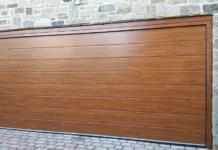Reroofing is the process of installing a new shingle overlay on top of your worn shingles to restore the look of your roof and provide better protection against leaks inside your home. If you have just one layer of shingles on your roof, then you can consider re-roofing. Unfortunately, roofs that already have two layers of shingles are not candidates for re-roofing and will need a full roof replacement. Installing the third layer is prohibited by building codes. Roofing contractors warn that adding a third layer is dangerous for many reasons and that usually, it’s best to pull up the old shingles before installing new ones.
Is it OK to reroof over old shingles?
Adding a third layer of shingles over existing layers puts too much weight on your roof. Adding a second layer to your roof already increases the strain and can exacerbate some of your roof’s problems, especially if you live in an area that gets a lot of heavy snow.
Re-roofing also makes it harder for contractors to conduct inspections properly. Without being able to properly examine the condition of the existing roof, you may not know about damaged plywood or flashing or issues in the deck that must be repaired. Roofing contractors need to be able to start from the base to see if there is any damage that needs to be fixed first before other types of repairs can be completed.
Re-roofing may not even be possible if you have a metal roof. Metal roofs can come in large sheets that can’t be simply placed over the old ones.
When considering to re-roof your home, there are several cost factors to be aware of. A roof with a steep pitch, complex design, chimneys, skylights, or other special requirements will be more costly. Roofing contractors will need specialized safety equipment for workers to walk on your roof. If there is extensive damage inside of your home, such as mold damage that has eaten away at the wooden beams in your attic, then it will need to be repaired before your new roof can be installed.
If only a portion of your roof needs to be repaired, and your roofing contractor can find shingles that match the ones you currently have, then that may be a wiser choice than re-roofing the whole roof.
What type of roofing lasts the longest?
The National Association of Home Builders (NAHB) lists slate as the longest-lasting roofing material, with a life expectancy of over 150 years. However, slate shingles are very heavy compared to other roofing materials, so re-roofing is almost impossible. Thankfully, slate shingles are resistant to hail damage, fire, and mold and last so long that you probably won’t need to worry about re-roofing.
The average lifespan of a clay-tiled roof is 100 years. Clay tiles are available in a variety of colors and come in glazed or unglazed finishes, though most people associate them with natural earth tones on Southwestern and Mediterranean architecture. Clay tiles can be constructed to mimic the look of wood shakes for rustic homes. They are impervious to fire, moisture, mold, and insects.
Metal roofs can last 50 to 100 years depending on the type of metal, so although they are more expensive to install, you save on maintenance costs and energy bills over the lifetime of your roof. There are many other advantages to metal roofs. They can withstand wind gusts up to 140 miles per hour, are made from 25% to 95% recycled material, are fully recyclable at the end of their lifespan, are energy-efficient, and resistant to fire, mold, moisture, and insects.
How do you know when it’s time to replace your roof?
If your roof is still in overall good shape and has not reached the end of its lifespan, then re-roofing may be the right choice for you. However, if your roof deck shows signs of damage or aging, then you should consider a complete overhaul of your roof. Signs of damage and defects include:
- Sagging on your roof
- A musty smell in your home that is particularly strong in one room
- Orange, brown, gray or black mold “blooms” on your walls that are irregular in shape
- Sunlight is seeping into your attic from outside
- Water stains on your ceiling
- Leaks during thunderstorms or after heavy rain
- Your energy bills are much higher than usual
When you think that it may be time to re-roof or replace your roof, you should speak to a roofing contractor who has been trusted in your area for many years. They know the weather conditions that your roof will have to withstand, the style and architecture of surrounding neighborhoods, are familiar with local building permit laws, and can get you the best prices on materials for your roofing project. They can also conduct yearly inspections on your new roof so that it is well-maintained for as long as you own your home.













